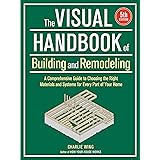Unearthing a 17th-Century Time Capsule: The Old Mill Site Discovery
Imagine peeling back centuries of earth, layer by painstaking layer, until a glimmer of the past emerges. This isn’t just a scene from a historical drama; it’s the reality for archaeologists at the Old Mill archaeological site. As Dr. Eleanor Vance discusses in the accompanying video, a recent excavation has unearthed a remarkable piece of history: a perfectly preserved wooden chest from the late 17th century, offering an unprecedented glimpse into the lives of the area’s former inhabitants.
This discovery transcends mere artifacts. It provides a direct, personal narrative where previously only fragments existed. Rather than just structural remains, we now have voices from the past. The find at the Old Mill site truly humanizes history, bringing individuals to life through their personal belongings and correspondence.
The Old Mill Archaeological Site: A Window to Daily Life
For years, researchers at the Old Mill archaeological site relied on architectural ruins and scattered pottery shards to piece together the history of the area. These structural remnants offered valuable insights into building practices and general societal organization. However, they often lacked the intimate details that reveal the true essence of human experience.
In contrast, the recent discovery of the 17th-century wooden chest radically alters this understanding. Buried deep beneath layers of protective sediment, the chest’s remarkable state of preservation defied expectations. This unusual level of protection ensured that its contents remained largely intact, shielded from the ravages of time and environmental degradation.
Contents of the Chest: Echoes from the 1600s
The true marvel of this historical discovery lies within the chest itself. Upon careful opening, archaeologists discovered a treasure trove of personal effects and documents. These items are not only rare but also incredibly specific, allowing historians to reconstruct aspects of daily life from the late 17th century with unparalleled accuracy.
Among the most significant finds were personal correspondence. These letters, exchanged between family members, provide an invaluable, direct line to their thoughts, concerns, and everyday routines. Unlike official records, which often focus on public affairs, personal letters reveal the emotional landscape of the time, offering insights into family dynamics, social norms, and individual struggles.
Another crucial element was a collection of ledger entries. While less personal than letters, these entries offer concrete data about economic activities, trade, and household expenditures. They paint a detailed picture of financial practices during the late 17th century, shedding light on the costs of goods, wages, and the overall economic landscape of the Old Mill site community.
Charting the Past: The Rare 17th-Century Map
Perhaps the most extraordinary document found within the chest is an early map of the local area, also dating back to the late 17th century. Maps from this period, especially those in such excellent condition, are exceedingly rare. Their scarcity underscores their immense value to historical and geographical research.
This particular map serves as more than just a navigational tool. It provides crucial insights into how the landscape was perceived and utilized by the community at that time. Whereas modern maps emphasize precise measurements and standardized symbols, historical maps often reflect a more subjective understanding of space, influenced by local landmarks, property lines, and resource distribution. Understanding these nuances helps researchers contextualize land use, settlement patterns, and even social hierarchies of the era.
Personal Effects: Touching the Lives of the Past
Beyond the documents, the chest held a selection of personal effects that offer a tangible connection to their original owners. Each item speaks volumes about the domestic life of the 17th century.
- An Intricately Carved Locket: Such an item suggests sentimentality and personal adornment. Lockets often held locks of hair or miniature portraits, making them deeply personal mementos.
- A Silver Thimble: This practical tool points to daily chores and the importance of needlework in household management. Silver indicates a certain level of status or value placed on the item.
- A Few Clay Pipes: Clay pipes were common in the 17th century, used for smoking tobacco. Their presence provides evidence of common leisure activities and social customs.
These artifacts, individually and collectively, give historians a richer understanding of the people who once called the Old Mill site home. They demonstrate the balance between practicality and personal expression in 17th-century domestic life.
Humanizing History: Beyond Ruins and Shards
The significance of this 17th-century chest discovery cannot be overstated. Before this find, archaeologists primarily relied on structural remains and fragmented pottery. These provide a macro-level view of past societies, detailing architecture, settlement patterns, and general cultural practices.
However, the chest offers a micro-level perspective, diving into the individual human experience. It shifts our understanding from anonymous inhabitants to individuals with names, families, and personal stories. For instance, the letters reveal personal triumphs and sorrows, while the ledger entries detail their economic interactions. This humanizing effect brings history off the page and into a more relatable, empathetic context.
Moreover, the well-preserved nature of the items provides valuable data for conservationists. The methods of preservation due to deep burial and sediment layers offer practical lessons for future archaeological endeavors. The ongoing journey of conservation, as Dr. Vance notes, ensures these fragile pieces of the past are protected for generations to come, allowing continued research and discovery at the Old Mill archaeological site.







